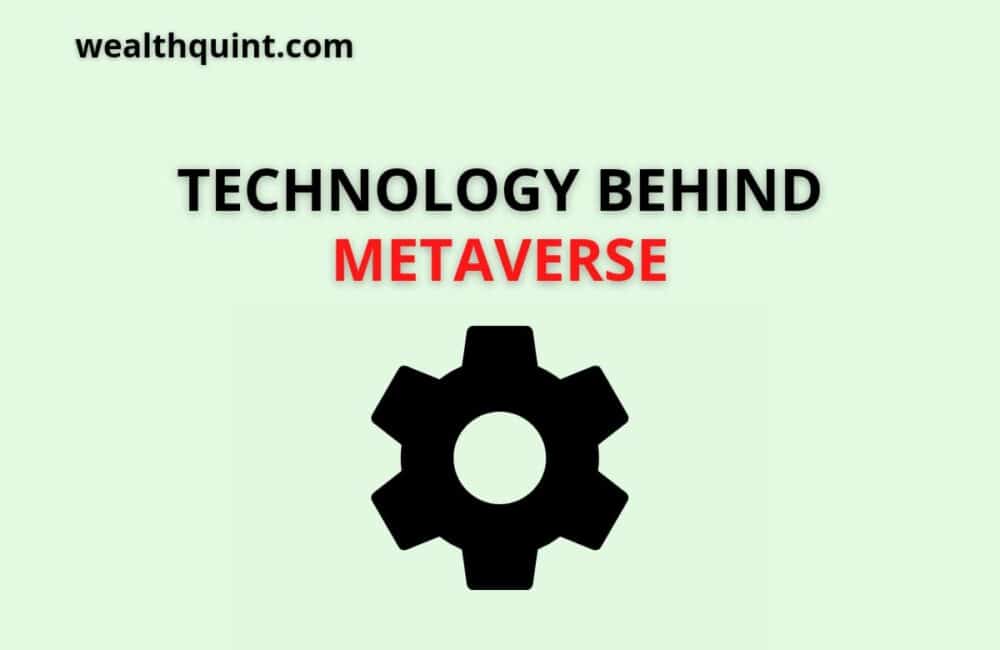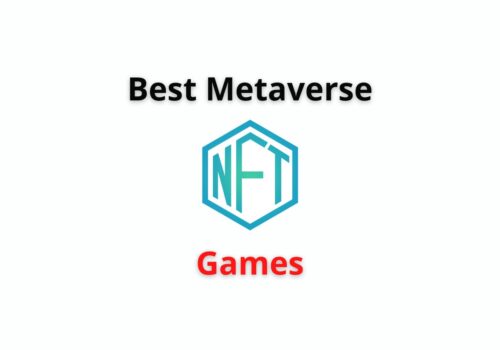The way we interact with comprehensive reality technologies has dramatically changed over the past several years, especially in the gaming field. As corporations compete for market dominance, the scope of new ideas has become increasingly unclear and uncertain.
Those who are interested in technology have heard of the “metaverse,” which is currently a buzzword in the industry. Facebook announced that it was rebranding its portfolio of firms “Meta” to better align its businesses with its vision to establish the metaverse.
The buzz surrounding this phrase may have reached its height at that point.
What Is Metaverse?
Metaverse is a world of digital products, virtual avatars, and functional economies, where technology is more than a utility; it’s a way of life. Metaverses are non-physical worlds where people can communicate through various forms of virtual technology.
The metaverse of the VR world consists of an assortment of virtual platforms and environments linked to people from around the globe. There is no doubt that this technology is here to stay for a very long time.
Some aspects of the metaverse have already been incorporated into Axie Infinity, Sandbox, Decentraland to bring multiple elements of our lives online. Despite this, the metaverse is still under development.
Nobody knows if there will be just one giant, all-encompassing metaverse or multiple ones that you can explore.
The concept is expected to extend beyond video games and social media platforms as it continues to develop. One of the potential benefits of the metaverse is the possibility of remote working, decentralized governance, and digital identity.
With VR headsets and glasses, it can also be more multi-dimensional, allowing users to walk around in 3D spaces physically.
Understanding The Metaverse Technologies
At present, the business sector and entertainment industry are interested in understanding what a metaverse is, how it will impact their business model, and how they can prepare for this next innovation in technology.
To develop new products, transform a business or mitigate risks, technology innovation leaders must identify, examine and track emerging technologies. A technology like Metaverse can drive strategic business innovations you need to consider proactively.
With Metaverse, people can replicate their physical activities or enhance them. A virtual world could extend or transport physical activities, or the physical world could be transformed. Metaverses are meant to combine a wide range of these activities, but at the moment, many have limited functionality.
Further, it is equally important to understand these technologies. As more advanced techniques are developed, the average price for app design in the United States will undoubtedly increase. Therefore, business owners must know what they need to focus on when planning their next stage.
Business owners also need to realize that as the landscape of the Metaverse changes, so too will the types of content. Therefore, the industry needs quality content marketing strategies with immersive, virtual environments to progress.
Also Read: How to Get Into The Metaverse?
Technologies Behind The Metaverse
1. Blockchain And Cryptocurrency
In addition to proving ownership and collection, facilitating value transfer, governing access, and ensuring interoperability, blockchain technology provides decentralized and transparent solutions. Cryptocurrencies boost users’ ability to exchange value while working and socializing in 3D digital worlds.
For example, Crypto can be used to purchase virtual lands on Decentraland. The game’s cryptocurrency MANA lets players purchase 16×16 meter land parcels through non-fungible tokens. Using blockchain technology, it is possible to establish and secure the ownership of virtual lands.
Furthermore, Crypto might one day motivate people to work in the metaverse. More and more companies are moving their offices online, increasing the number of jobs associated with the metaverse.
2. Augmented Reality (AR) And Virtual Reality (VR)
Virtual reality-VR and augmented reality-AR provide immersive and immersive 3D experiences. They are our means of entering the virtual world. In AR, the real world is morphed with digital visuals.
In contrast to VR, it is easier to use and can be used on most smartphones and digital devices that have cameras. Augmented reality allows users to view their surroundings through interactive digital imagery.
This is similar to the Pokémon we can see when we open the camera on our phone in real life. But VR is different. As with the metaverse concept, it creates entirely virtual environments using computer code. Virtual reality headsets, gloves, and sensors are needed to view these.
Virtual and augmented reality represents early examples of the metaverse. Currently, virtual reality creates a digital world that contains fictional media.As VR’s technology matures, it will be able to incorporate physical simulations into the metaverse experience.
As a result, users can listen to, feel, and interact with people from other parts of the world through the application. Because of the hype surrounding the metaverse, more companies are likely to invest in developing virtual reality and augmented reality machines in the future.
3. Artificial Intelligence (AI)
In recent years, AI has been widely applied to our lives: planning business strategies, making decisions, recognizing faces, and speeding up computing, among other uses. In recent years, AI experts have examined applications of AI to create immersive metaverses.
This technology can process enormous amounts of data at lightning speed. When combined with machine learning techniques, AI algorithms can gather insights from historical data, learn from previous iterations, and generate unique outputs and insights.
In addition, AI can enhance non-player characters (NPCs) in different ways within the metaverse.
Almost every game has NPCs; they are a vital part of the gaming environment that responds to players’ actions. By using AI, NPCs will be able to interact in 3D spaces and have lifelike conversations with users or perform other tasks.
AI NPCs can run independently and interact with millions of players simultaneously, unlike human users. In addition, they can operate in several different languages. One of the possibilities of AI is creating metaverse avatars.
With the help of AI engines, we can generate avatars that appear more realistic and accurate by analyzing 2D images and 3D scans. Furthermore, to enhance the digital humans we create, AI can also be used to make facial expressions, hairstyles, clothes, and other features.
4. 3D Reconstruction
3D reconstruction is not new technology, it became more widespread during the pandemic when lockdowns prevented potential buyers from visiting properties in person. Thus, some agencies started using 3D reconstruction to generate virtual tours of properties.
As in the metaverse we imagined, buyers could check out potential new homes from anywhere and purchase them without setting foot inside.
A significant challenge is creating a virtual world that appears as close to reality as possible. It also enables the creation of realistic and organic-looking spaces through 3D reconstruction. Using unique 3D cameras, we can render accurate 3D models of buildings, locations, and objects on the web.
The 3D spatial data and the 4K HD photography are sent to computers for processing. The virtual replicas are then displayed in the metaverse for users to explore. These virtual replicas of physical objects are also called digital twins.
5. Web 3.0 – The Next-Gen Internet Technology
Content creators were few in web 1.0, with most users simply consuming content. They frequently recur in the web 2.0 era. Web 2.0 impedes Web development as a platform for software applications instead of just desktop computers.
This enabled massive user participation in content creation on social networks, blogs, and sharing sites. However, web 2.0 technologies greatly empower centralized tech giants and enable surveillance and exploitative advertising.
One of the advantages web 3.0 has is the decentralized blockchain protocol, which allows people to connect to an internet where they own the data and time and are adequately compensated.
This is more beneficial than a web where centralized giant companies hold the lion’s share of the traffic and can siphon profits away.
A web 2.0 is expected to use semantic metadata to enable computers to understand the meaning of sentences, generate, share and connect content, and search and analyze it. In addition, web 3.0 will allow greater connection between data sources.
As a result, the user experience improves to an even higher level of connectivity, leveraging every piece of information on the Internet.
6. Internet Of Things (IoT)
Internet of Things (IoT) is a system that connects everything in our physical world to the Internet via sensors and gadgets. These gadgets will have a unique identifier and the capacity to send and receive information automatically after connecting to the Internet.
Today, the Internet of Things connects voice-activated speakers, thermostats, medical gadgets, and other devices to various data sources.
Metaverse’s IoT applications are designed to collect and distribute data from the physical world. By doing so, the digital representations would be more accurate. For example, particular metaverse objects might act differently based on current weather conditions.
In addition, 3D environments may be seamlessly adapted to a wide range of real-life devices through the Internet of Things. Using this technology, simulations can be made within the metaverse.
Additionally, IoT could utilize AI and machine learning to enhance the metaverse further by handling the data it collects.
7. Mobile Device Processors
Augmented Reality on mobile phones will need to work on glasses such as those found in the mainstream to appeal to the mainstream public.
To make this possible, we would need small, superfast mobile processors that can be integrated into conventional glasses, VR devices, high-end mobile processors with low latency and high frame rates, etc., as processes require additional cores and components.
Additionally, optical elements compatible with standard silicon components may be introduced. Eventually, this may result in the speeding up of data transfer.
8. Edge Computing
The use of edge computing is increasingly popular in commercial spaces because it promotes faster data transmission with minimal delays, which is essential to high-quality, immersive virtual experiences.
However, with millions of people sharing virtual experiences worldwide, the cloud cannot support the amount of processing power necessary to support the system. Instead of bringing the processing closer to the users, distributed computing can make the entire experience much more fluid.
9. Internet Infrastructure
Startups and IT companies are working to overcome the challenges of delivering a real-time, immersive virtual world. As a service, Metaverse does not rely on an application to operate. Neither is it a world nor a game.
Instead, it’s a new Internet generation, enabling real-time interaction. Infrastructure is what forms the Metaverse. The Metaverse features a vast virtual world with highly detailed textures and huge polygon counts; it would require highly high internet speeds, high bandwidth, and very low latency.
With 5g, millimetre-wave frequencies reach incredibly high levels, enabling VR experiences, including the sense of touch, and AR experiences, allowing users to converse with AI characters in real-time.
It is expected that 6G will replace 5G soon. However, 6G technology is not available at this time. However, research initiatives have already been launched in several countries. According to some experts, its speed could be one to two times faster than 5g, which amounts to one terabyte per second.
A rate of that kind could enable you to download 142 hours of Netflix content in a second. In addition, the 6G network will allow cyberspace to support human cognition and action in real-time, according to a white paper from NTT Docomo.
Sensory interfaces using wearable devices and microdevices mounted on the body would feel and look just like real life.
Also Read: What is Metaverse And How Does It Work?
Final Thoughts
Despite the fact that the Metaverse arose from dissatisfaction with businesses’ influence over personal lives, connected virtual experiences are not necessarily negative.
We can create ways to serve consumers while growing our firms’ earnings if we approach these technologies ethically and responsibly.
These technologies aren’t meant to take the natural world’s place; instead, they’re meant to expand our reach across the Internet, allowing us to share experiences in areas where we previously couldn’t. It is up to us to shape how the Metaverse develops, so let’s create the future we want to see.




